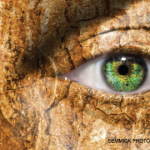Researchers have previously described a relationship between scleroderma and cancer. In particular, a subset of patients is diagnosed with both cancer and autoimmune disease at approximately the same time. This has led investigators to wonder if the two processes may be mechanistically connected.
Christine G. Joseph, PhD, of Johns Hopkins University School of Medicine, in Baltimore and colleagues investigated this question and published their results online Dec. 4, 2013, in Sciencexpress. Their research not only sheds light on the pathogenesis of scleroderma, but also supports the role of acquired immunity in controlling cancer.
“The connection between cancer and the autoimmune diseases has been tantalizing. … In some ways, what is surprising, is that the connection may be quite simple,” explained lead investigator Antony Rosen, MD, in a phone interview with The Rheumatologist.
POLR3A Mutation
The investigators report that mutation in POLR3A initiates an immune response to RPC1 in a subset of patients with scleroderma. Specifically, they document antibodies to wild type and mutant RPC1 in all patients with POLR3A mutations.
“Our data therefore suggest that the ‘foreign’ antigen triggering the autoimmune response in scleroderma patients is actually a tumor antigen. This complements previous observations indicating cancers can elicit immune responses,” write the authors in their discussion.
Dr. Rosen explained that in the 1950s and 1960s many researchers believed the immune system was able to see antigens on cancer cells and, therefore, effectively police the body for cancer cells. The idea fell out of favor, however, because it was difficult to find evidence supporting a role for acquired immunity in response to cancer.
Self-Antigen
In the current publication, the authors propose that a mutation results in a modified form of self-antigen that is recognized by the immune system. Dr. Rosen suggests the cancer cells would provide the necessary second signal to the immune system by possibly dying differently than normal cells or becoming inherently “dangerous,” with danger signals that have not yet been identified.
The team noticed that in the case of some of their patients, the patients had only a relatively low fraction of neoplastic cells with genetic alterations. They interpreted this as consistent with immunoediting: Cells with the POLR3A mutation were selected against during tumor growth by a specific immune response.
The Stages of Immunoediting
Dr. Rosen described immunoediting as containing three stages:
1. Elimination,
2. Equilibrium and
3. Escape.
In the first stage, the cancer is generated, and the immune system responds by eliminating the cancer. The patient would perceive this as a silent event.

